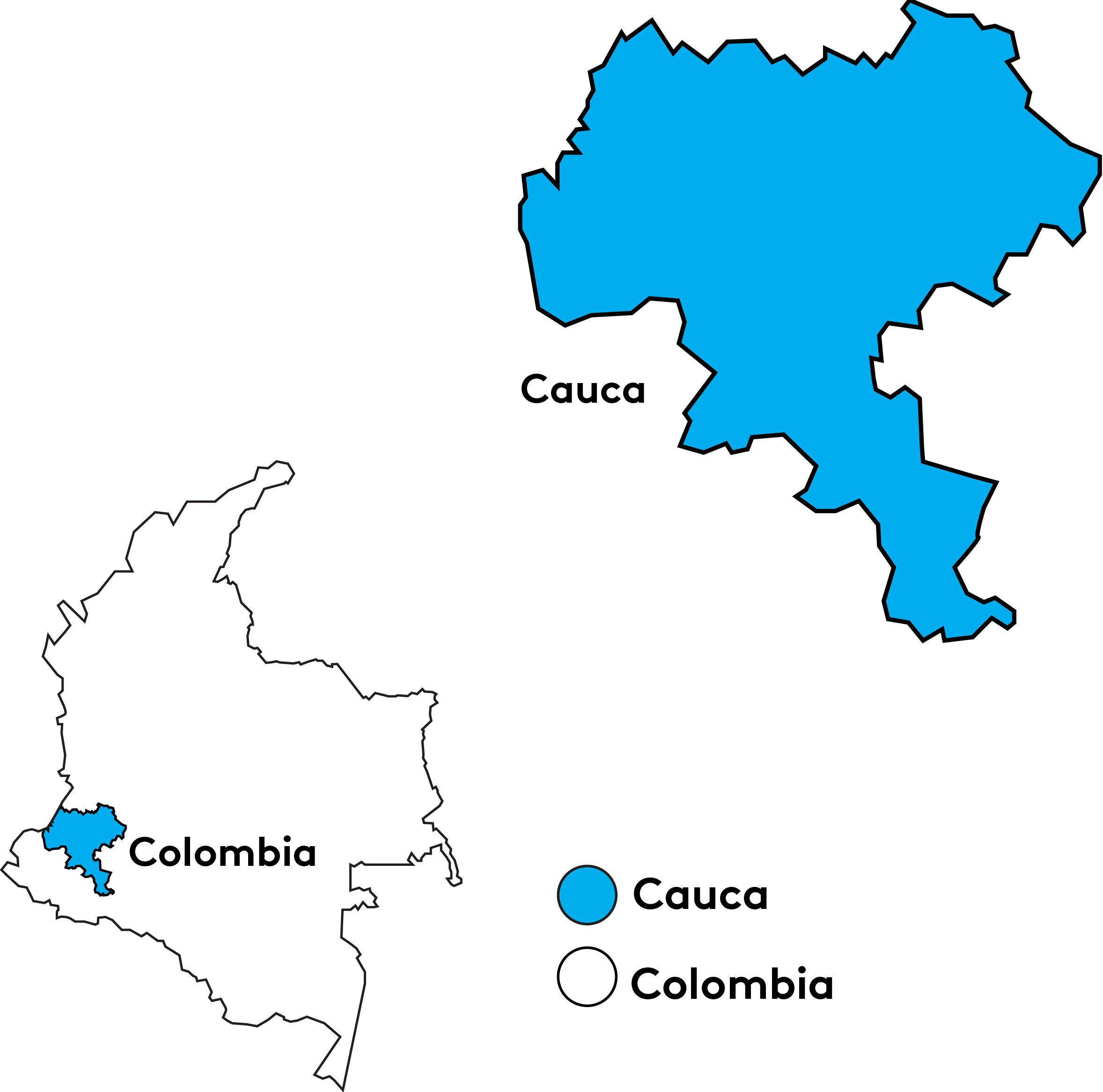Region
Cauca
The Colombian department of Cauca lies in the southwestern part of the country, with the Pacific Ocean to the west, Valle del Cauca Department to the north, Tolima Department to the northeast, Huila Department to the east, and Nariño, Putumayo, and Caqueta Departments to the south. Many rivers traverse Cauca and the Central Range of the Andes Mountains runs through the department. Popayan is the capital city and Cauca’s population is distributed throughout the rural highlands and valleys.
Coffee producers here are mainly smallholder farmers with less than 1.5 hectares of land and 4000–6000 coffee trees in production on average. The soil in the region is fertile due to volcanic ash, and the weather is filled with warm days and cool nights due to winds blowing from the paramo, high plateaus in the area’s mountains. These factors all contribute to the region’s classic cup profile, delicate and balanced with hints of confection-like sweetness.
